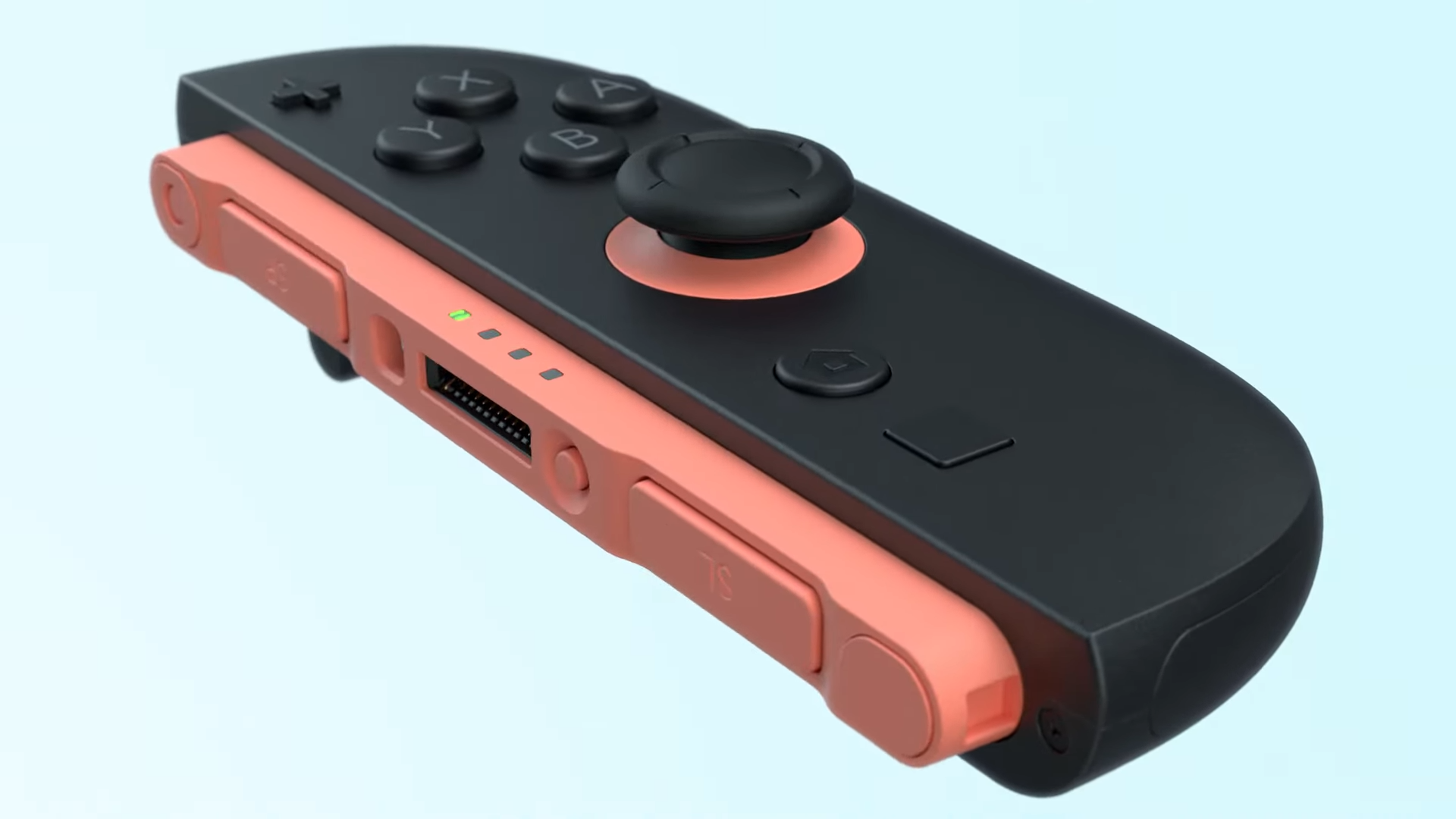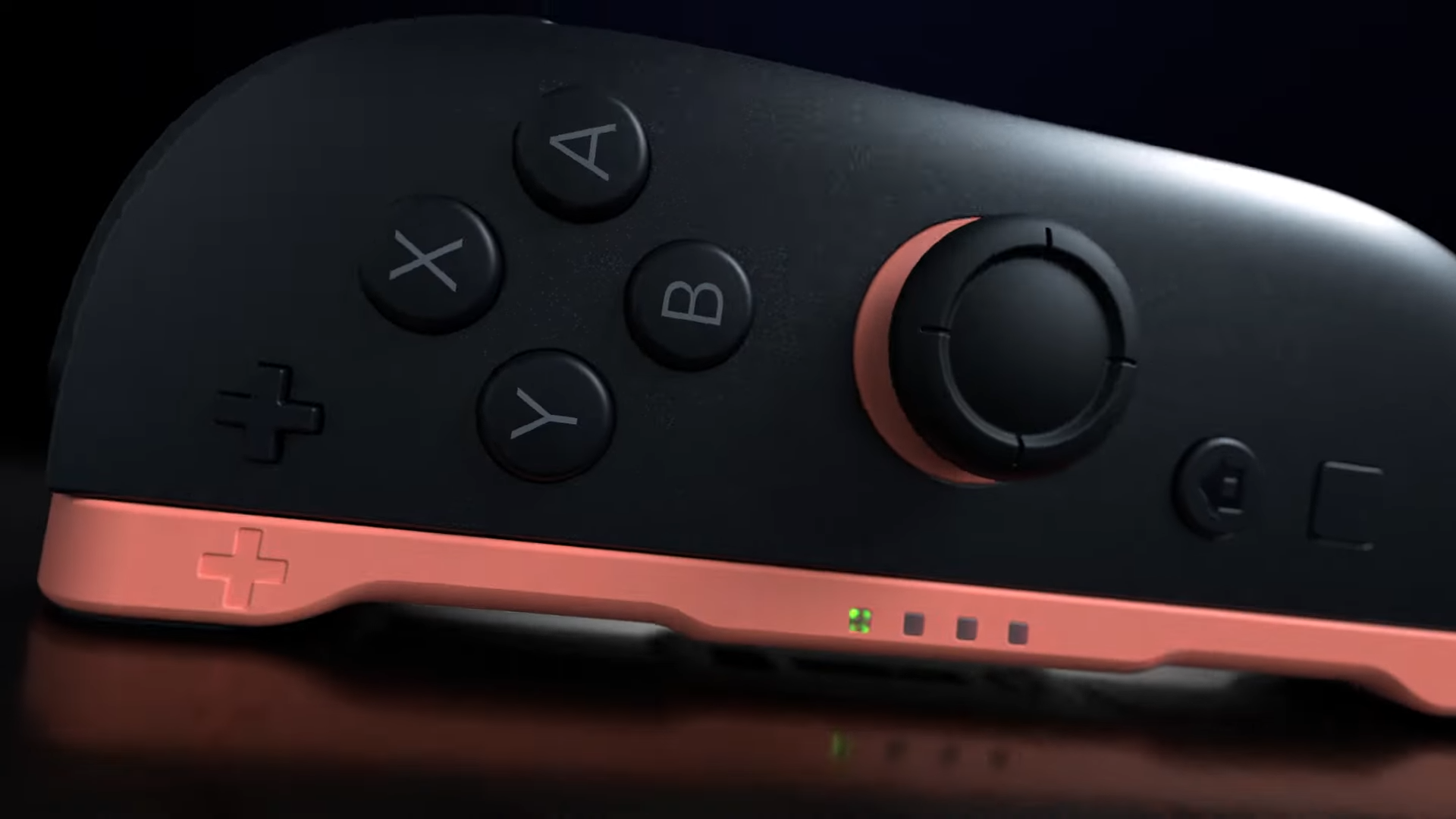The Nintendo Switch 2 Joy-Con IR Sensors explained
Here's everything you need to know about the IR Sensors that could appear in the Nintendo Switch 2's Joy-Con controllers

If you’ve been watching Nintendo Switch 2 news like a hawk for the past few weeks, you may have spotted leaks about the new and improved Joy-Con controllers, and wondering just what an IR sensor is. Originally posted to an unknown Chinese social media site, then plastered over the r/NintendoSwitch 2 Sub Reddit, images of the upgraded Joy-Con controllers were revealed showing off the new magnetic mounting system, a new button, and most importantly, updated IR sensors.
The existence of these sensors isn't entirely new when you compare the Switch 2's Joy-Con with the original. In fact, the original Nintendo Switch has an IR sensor of its own, but only on the right Joy-Con controller. However, leaks appear to suggest that this time around, each Joy-Con has a sensor of its own, opening up the Switch 2 to a realm of new mechanics and gameplay options. From the short and wordless reveal trailer we have for the Switch 2, it's hard to say for certain that the new Joy-Con controllers sport these sensors, but shots of them being used on their sides, sliding around a tabletop may hint that they exist.
We've gathered all there is to know about the brand-new Joy-Con IR sensors, from how they might be used to exactly what they are and where you'll find them on your new device. Keep in mind that the presence of these sensors hasn't been confirmed and they certainly don't appear in many best PC controller contenders. That said, if you want to know more, read on.
What are IR Sensors?

An IR (infrared) sensor is a device that detects and measures infrared radiation in any given environment. In this modern age, IR sensors are typically used in motion detectors and the best VR headsets. In the latter, they measure the depth of a space and your proximity to things in your environment. In other words, they prevent you from walking into walls and looking like a bit of an idiot.
The system works by sending out infrared light, which the human eye can't see. This light travels in a straight line until it meets an object, at which point it's reflected back to the sensor. Because a whole load of these lights are being sent out constantly, the sensor can build a picture of what's in front of it - any changes in the light being reflected back indicate movement of the object, which can then be tracked.
This technology isn’t new to the Nintendo Switch. The original model Switch was integrated with an IR sensor on the right controller, located at the bottom of the Joy-Con. Nintendo dubbed it the ‘IR motion camera’ where it was utilized in games like Ring Fit Adventure, Nintendo Labo, and Resident Evil Revelations. In each game, the functionality is slightly different, despite using the same technology.
For example, while playing Ring Fit Adventure, players can check their pulse by holding their thumb against the IR motion sensor/camera. Within Resident Evil Relations, the IR sensor was used to reload your weapons. In 1 2 Switch, a day one release of the original Switch, it was even utilized to register the chomping of teeth in the game's 'Eating Contest' mini-game.
Where are the Switch 2 IR Sensors?

If the Nintendo Switch 2's Joy-Con controllers do have IR sensors, it looks as though they're located on their insides - in other words, the side that attaches to the console in handheld mode.
In particular, the shot from the reveal trailer that sees the controllers flipped on their sides and slid across a surface may indicate that the sensors inside can track the controllers like a computer mouse. This would line up with leaks but would be quite out of traditional ideas of how to interact with Nintendo consoles.
The "insides" of the new Joy-Cons appear to have pop-out buttons that integrate their pairing and bumpers into the body, which is a nice development from the original. Either that, or they have an attachment that offers them a bit more girth.
For more on innovative controller technology, check out the best PS5 controllers, the best Xbox Series X controller, and the best Nintendo Switch controllers.
We're also rounding up all the retailers we expect to offer Nintendo Switch 2 pre-orders in April as well.
Sign up to the GamesRadar+ Newsletter
Weekly digests, tales from the communities you love, and more

Ever since I first held a NES controller in my hand I've been obsessed with gaming, and the hardware it runs on. I could hook up a NES and SNES to a telly, without instructions, before I could walk. Even now, nothing is more exciting then taking a console, or handheld, out the box for the first time and setting it up. This obsession transformed into a love of games and game music, which lead to my music degree and dream of becoming the Scottish Nobuo Uematsu. After sharing my love of games through music, I began to share my love through words on sites like TechRadar and iMore. This lead to becoming a Hardware staff writer for PCGamesN, and later the Senior Tech Writer for Dexerto, covering all things Steam Deck, PlayStation and Nintendo. With that experience, I was able to level up as Hardware Editor for GamesRadar+, where I'm still just as Nintendo, PlayStation and gaming tech obsessed as ever.
- Duncan RobertsonHardware Editor


